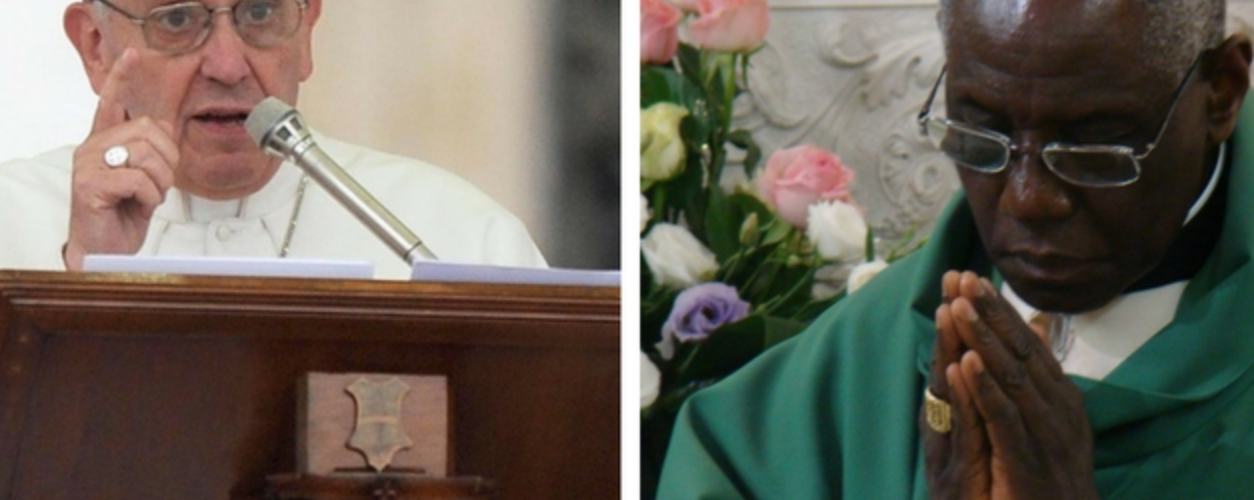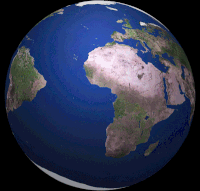In my opinion, the world’s two most powerful and influential news outlets are the BBC and The New York Times.
Needless to say, both of these news organizations have offered coverage of Pope Francis and his latest visit to Africa. It’s interesting to note some consistent thin spots — doctrine-shaped holes, really — in the background coverage explaining why this trip matters so much, in terms of certain demographic realities in the modern Roman Catholic Church.
Consider this crucial passage in the BBC advance feature that ran with this headline: “Pope Francis in Africa: Is the continent the Catholic Church’s great hope?” This three-nation trip to Africa will be:
… his fourth visit to the continent since he became the head of the Roman Catholic Church in 2013, compared to the two his predecessor, Pope Benedict XVI, made during his eight-year papacy.
The importance of Africa to the Catholic Church can be summed up in a word — growth.
Africa has the fastest growing Catholic population in the world, while Western Europe, once regarded as the heartland of Christianity, has become one of the world’s most secular regions, according to the US-based Pew Research Center. And many of those who do identify themselves as Christian in Western Europe do not regularly attend church.
Here is a stunner of a statistic, care of the Center for Applied Research.
Start here. The number of Catholics in the world increased by 57% to 1.2 billion, between 1980 and 2012. However, growth in Europe was just 6%. Frankly, I am surprised to hear that Catholic numbers rose in Europe at all. I would be interesting to see a comparison of Western and Eastern European nations.
Meanwhile, the Catholic population rose 283% in Africa.
So why is that happening? Thinking like a religion writer, the first things that leap into my mind are (1) African Catholics are having more babies and (b) they are making more converts. Both of those factors have major doctrinal components in the post-Vatican II Catholic world. You could also note that the African church is raising up many more priests than the somewhat frozen European churches.
The BBC team, I think it’s safe to say, saw zero doctrinal component in the African church’s growth. This report did make a valid point linked to economics and, sort of, political culture.
“I think Africa is where the future is really [for the Catholic Church],” says Nicolette Manglos-Weber, Assistant Professor of Religion and Society at Boston University’s School of Theology.
The growth in Africa is partly because its overall population is increasing faster than that of any other continent. However, there are other reasons — including the fact that by being part of the Catholic Church people are part of “a social institution that provides a lot of support and security in places where precarious living is very common and widespread,” Dr Manglos-Weber says.
“The Church provides hospitals, schools, [and] other social services. [These are ] things that post colonial governments in … Africa have had a difficult time providing on a widespread scale.”
One other point about the BBC report: There is no evidence cited here of tensions between Africa’s more conservative brand of Catholic faith and that offered by the bishops of Europe and, on many crucial doctrinal and worship issues, the Italian-Argentinian Pope Francis.
So let’s more on to The New York Times and its report with this headline: “In Africa, Pope Francis Comes Face to Face With the Future of the Church.”
When I read this part of the piece I worried that the Times, like the BBC, was going to ignore the tensions between the thriving Catholic church in Africa and the one in post-Catholic Europe.
Unlike his predecessor, Benedict XVI, who preferred a small but concentrated church, Francis is willing to be more inclusive to be more relevant. And Africa, where about 60 percent of the population is under the age of 25, offers his church room for growth.
“Africa is the most rapidly growing part of the church,” said Sean Callahan, the president of Catholic Relief Services, the humanitarian arm of the Catholic Church in the United States. It is also providing what he called a “reverse evangelization.”
“In the past, it was Europe sending priests to Africa,” he noted. “Now it’s Africa sending priests to Europe.”
On Thursday, Francis visited the Animators Cathedral of the Immaculate Conception, where he told the country’s bishops, priests, nuns and seminarians to keep looking forward.
“The promised land is before us, not behind us,” he said, while encouraging them to inspire, not browbeat, their people. “Instead of proclaiming Good News, we announce a dreary message that attracts no one and sets no one’s heart afire.”
Question: Is there any evidence that the more traditional — on many issues — approach to Catholicism found in Africa is having less success make converts and inspiring priestly vocations than the more modernized faith offered in Europe?
However, the Times team did manage to note the African vs. European tensions in this passage near the end of the article. But did the article focus on crucial issues of moral theology and the nature of worship?
No, it argued that the key issue is immigration.
… While Africa may be the hope for the church’s future, its brand of conservatism is not necessarily the Catholicism that Francis promotes.
Cardinal Robert Sarah of Guinea has emerged as a leading critic of Francis and a hero to populists and conservatives in the hierarchy, in part for his opposition to migration to Europe.
Clergy “bewitched” by politics, he told a French magazine this year, had misinterpreted the Gospels to defend migrants. “It is better to help people flourish in their culture than to encourage them to come to a Europe in full decadence,” he said.
Amazingly tone deaf, methinks. Is immigration the issue that is crucial to Catholic in sub-Sahara Africa or crucial to journalists at the great Gray Lady?
Just asking.










